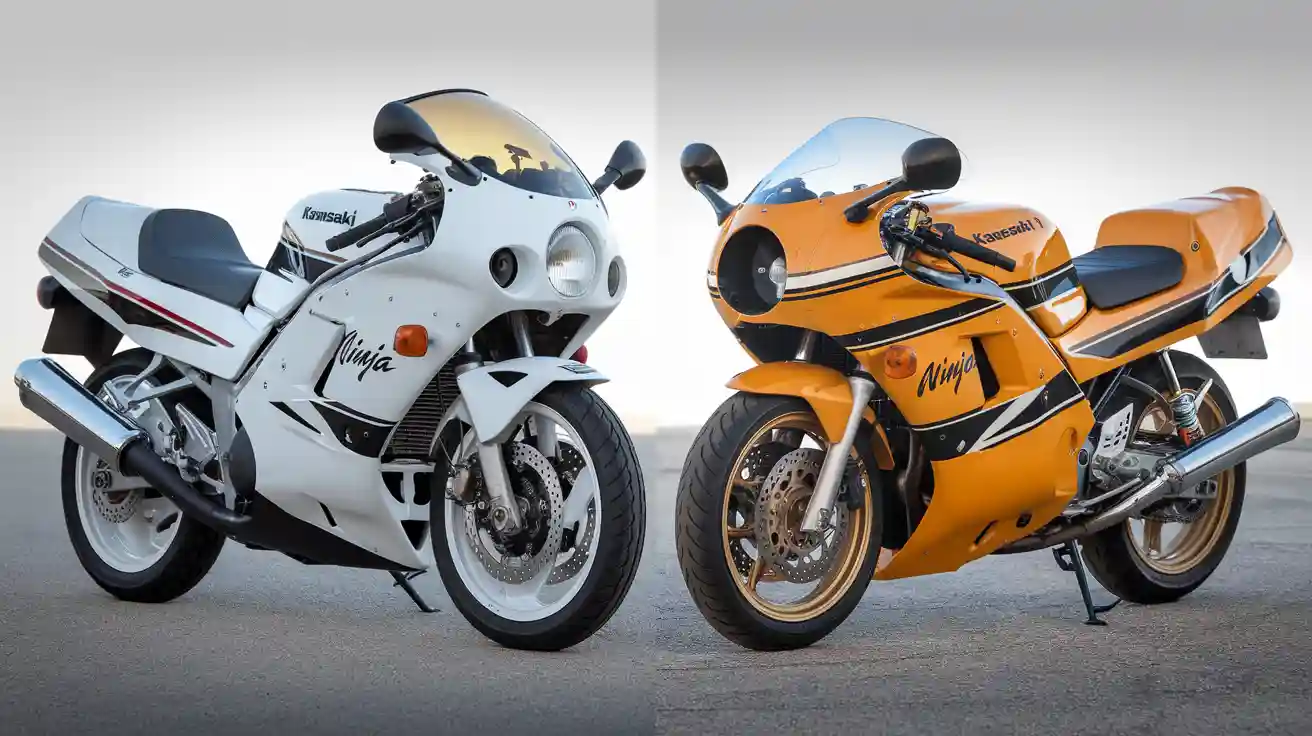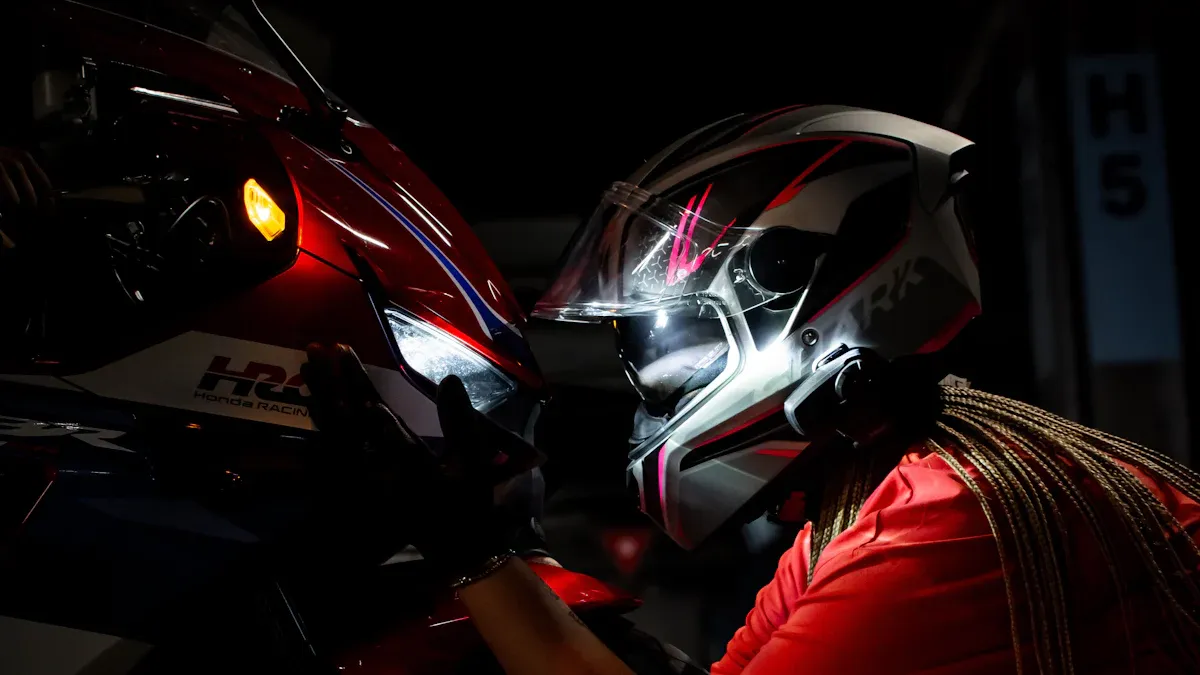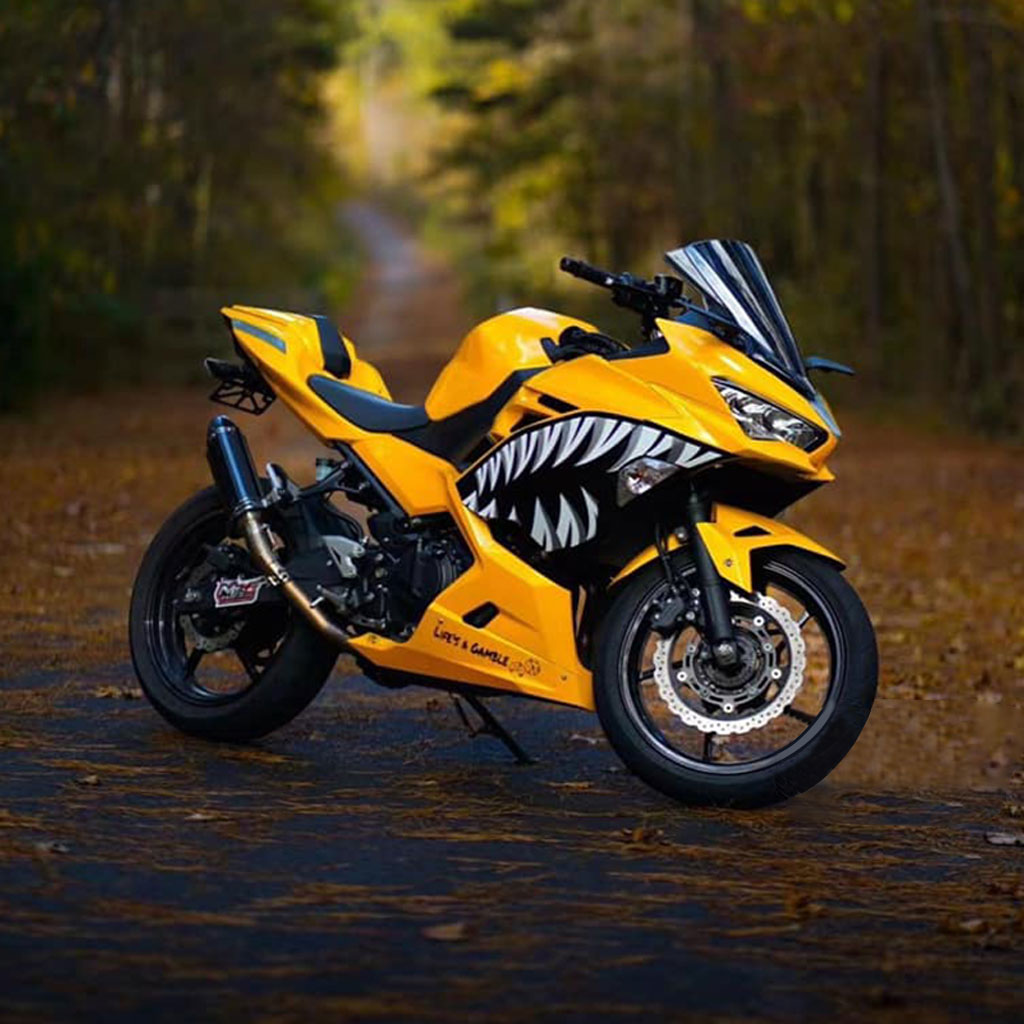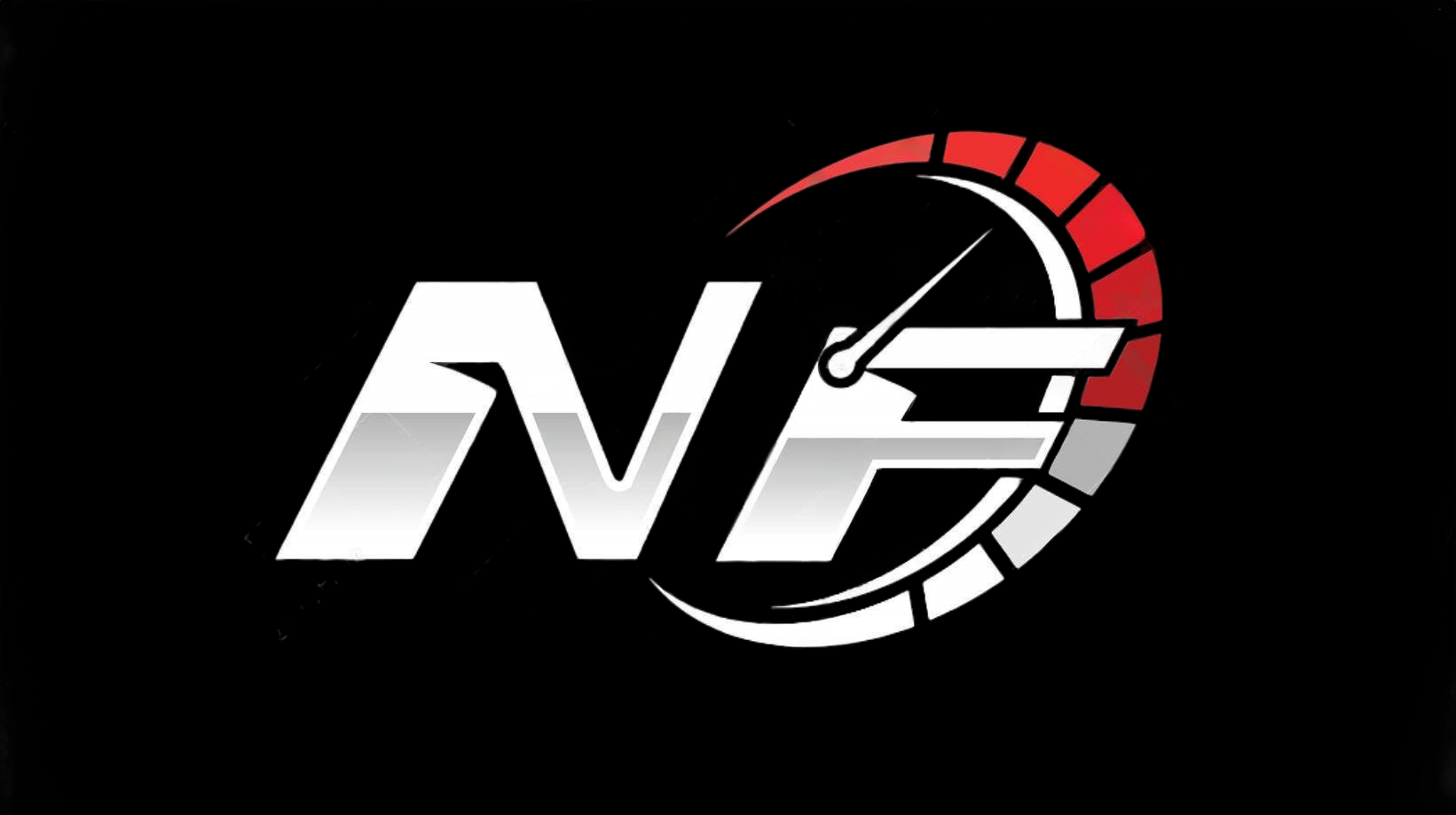How the 2007 Kawasaki Ninja EX250F Stacks Up Against the 2008 Model in Design and Performance

Riders often compare the 2007 kawasaki ninja ex250f to the 2008 kawasaki ninja 250 when searching for the ideal ninja 250 for their riding style. The 2007 model features a 1990s fairing design, a higher engine compression ratio, and a focus on peak power, while the 2008 model brings a modern look, improved midrange power, and updated components.
| Specification | 2007 kawasaki ninja ex250f | 2008 kawasaki ninja 250 |
|---|---|---|
| Engine Compression Ratio | 12.4:1 | 11.6:1 |
| Peak Power | 45 hp @ 11,000 rpm | Improved midrange, less peak |
| Weight (wet) | 160 kg (355 lbs) | 170 kg (375 lbs) |
| Fairing Design | 1990s, more enclosed | Modern, sportier panels |
Kawasaki designed both ninja 250 models as lightweight, beginner-friendly sportbikes. The 2007 kawasaki ninja ex250f suits riders who want a classic look and a free-revving engine for spirited riding. The 2008 model appeals to those seeking smoother riding, better comfort, and a sleek, modern ninja style. Riders choose based on comfort, riding experience, and the type of ride they prefer. The ninja 250 remains a top choice for new riders who want confidence and reliability in every ride.
Fairing Design: 2007 Kawasaki Ninja EX250F vs. 2008 Kawasaki Ninja 250
2007 Kawasaki Ninja EX250F Fairing Features
The 2007 kawasaki ninja ex250f uses a fairing design that dates back to 1988. This style gives the ninja 250 a classic look that many riders still enjoy. The panels cover most of the bike, creating a smooth and enclosed shape. Riders often notice the rounded edges and simple lines. The fairing protects the engine and helps shield the rider from wind. Many people say this design feels familiar and comfortable, especially for those who like the look of older sportbikes.
2008 Kawasaki Ninja 250R Fairing Features
Kawasaki changed the look of the ninja 250 in 2008. The kawasaki ninja 250r features a redesigned exterior that matches the style of late-2000s sportbikes. The new panels look sharper and more aggressive. The ninja 250r now has sportier lines and angles. The fairing does not cover the bike as much as before, but it improves airflow around the rider. The 250r also comes with larger wheels and petal-shaped brake rotors. These changes make the ninja 250r look modern and help it perform better on the road.
Visual and Functional Differences in Kawasaki Fairing Design
The differences between the 2007 kawasaki ninja ex250f and the 2008 kawasaki ninja 250r stand out in both looks and function.
The 2008 ninja 250r’s redesigned exterior gives the bike a fresh and modern appearance. Riders see a big change from the 1990s style of the older ninja 250. The new design lines up with other sportbikes from the late 2000s.
- The 2007 ninja 250 uses a more enclosed fairing, which gives it a classic and smooth look.
- The 2008 ninja 250r uses sharper, sportier panels that improve aerodynamics.
- The 2008 model’s fairing helps manage airflow better and offers more comfort for the rider.
- The 250r’s new panels work with other updates, like improved suspension and larger brakes, to boost performance.
A table can help show the main differences:
| Feature | 2007 kawasaki ninja ex250f | 2008 kawasaki ninja 250r |
|---|---|---|
| Fairing Style | Classic, enclosed | Redesigned exterior, sporty |
| Aerodynamics | Basic | Improved |
| Rider Protection | Good | Better |
| Visual Appeal | 1990s sportbike | Modern sportbike |
The ninja 250’s fairing design changed a lot in 2008. The new look and function help the kawasaki ninja 250r stand out. Riders who want a modern ninja will like the 250r. Those who prefer a classic ninja 250 may choose the 2007 kawasaki ninja ex250f.
Impact of Fairing Changes on the Ride Experience
The fairing design on a motorcycle shapes the entire ride. When Kawasaki updated the ninja 250 in 2008, they changed how riders feel during every ride. The 2007 ninja uses a classic, enclosed fairing. This design blocks more wind and gives the rider a quiet ride. Riders who choose this model often say the ride feels smooth and steady. The fairing keeps the wind off the chest and arms. This helps riders stay comfortable during a long ride.
The 2008 ninja 250R brings a new look and a new ride. The sharper fairing panels cut through the air better. Riders notice less wind buffeting at higher speeds. The ride feels more stable when passing trucks or riding on highways. The new fairing also directs air away from the rider’s helmet. This makes the ride quieter and less tiring. Many riders say the 2008 model gives a better riding experience for daily commutes and longer trips.
Riders often mention that the updated fairing on the 2008 ninja 250R improves the overall riding experience. The ride feels more modern and comfortable, especially for those who spend a lot of time on the road.
The fairing changes also affect how the bike handles in different weather. The 2007 ninja’s enclosed fairing protects the rider from rain and cold air. This makes the ride more pleasant in bad weather. The 2008 ninja 250R’s fairing lets in a bit more air, but it manages airflow better. Riders feel less pressure on their bodies during a fast ride. The new design helps keep the bike steady in crosswinds. This gives riders more confidence during every ride.
A table can help show how the fairing changes impact the ride:
| Feature | 2007 Ninja EX250F | 2008 Ninja 250R |
|---|---|---|
| Wind Protection | High | Improved, more focused |
| Comfort on Long Rides | Good | Better for most riders |
| Stability at Speed | Decent | Improved |
| Weather Protection | Strong | Moderate, but better airflow |
Riders who like a classic ride may prefer the 2007 ninja. The enclosed fairing gives a traditional riding experience. Riders who want a modern ride with better comfort and stability may choose the 2008 ninja 250R. Both models offer a unique riding experience. The fairing changes show how design can shape every ride and every experience on the road.
Performance Comparison: Kawasaki Ninja 250R Evolution

Engine and Power Output: 2007 vs. 2008 Kawasaki
The engine sits at the heart of every ninja. Both the 2007 and 2008 kawasaki ninja 250r models use a 249 cc parallel-twin engine, but the details set them apart. The 2007 kawasaki ninja ex250f features a tubular diamond frame and a free-revving engine that reaches its peak power at high rpm. Riders notice that the 2007 engine delivers about 37.4 horsepower and 18 ft·lbf of torque at 10,000 rpm. The 2008 kawasaki ninja 250r keeps the same displacement but introduces new cylinder heads, camshafts, and a 2-into-1 exhaust. These updates improve engine response and midrange torque, making the ride smoother and more flexible.
| Specification | 2007 Kawasaki Ninja EX250F | 2008 Kawasaki Ninja 250R |
|---|---|---|
| Engine Type | Parallel twin, DOHC, 4-valve per cylinder | Twin, four-stroke, OHV |
| Displacement (cc) | 248-249 cc | 249 cc |
| Bore x Stroke (mm) | 62.0 x 41.2 | 62.0 x 41.2 |
| Compression Ratio | 11.6:1 | 11.6:1 |
| Cooling System | Liquid-cooled | Liquid-cooled |
| Maximum Power Output | ~31 ps (23 kW) @ 11,000 rpm | 37.4 hp (27.9 kW) @ 12,500 rpm |
| Maximum Torque | 21 Nm @ 8,500 rpm | 24 Nm (18 ft·lbf) @ 10,000 rpm |
| Gearbox | 6-speed | 6-speed |
The 2008 ninja 250r stands out for its improved midrange engine performance. Riders find that the 2008 model accelerates more smoothly from low speeds. The engine does not need to rev as high to deliver strong power. This change helps new riders feel more confident during city rides and stop-and-go traffic. The 2007 model, in comparison, requires higher revs to access its full power, which can make the ride feel more exciting for those who enjoy pushing the engine.
Fuel economy also differs between the two. The 2007 kawasaki ninja ex250f averages about 59 miles per gallon, while the 2008 model averages 52.5 miles per gallon. Riders who want to save on fuel may prefer the older ninja.
Handling and Ride Quality Differences
Handling shapes every ride on a sportbike. The 2007 kawasaki ninja ex250f offers a soft suspension that absorbs bumps and rough roads. Riders describe the ride as plush and forgiving, which helps beginners feel comfortable. The front fork sometimes bottoms out, and the bike can bounce on uneven pavement. This makes the 2007 model better for relaxed rides and less aggressive cornering.
The 2008 kawasaki ninja 250r brings a firmer suspension and a 5-position rear shock preload adjuster. Riders experience more precise handling and better stability, especially during spirited rides on smooth roads. The new seating position places the rider higher and more forward, which improves control in corners. The 250r feels lighter and more flickable, even though it weighs a bit more. Riders notice that the 2008 model tracks better through turns and holds its line with confidence.
- The 2008 ninja 250r rewards skilled riders with sharper handling.
- The 2007 model provides a softer, more comfortable ride for daily use.
- The 250r’s higher seat and new ergonomics help riders corner with more ground clearance.
Note: The 2008 ninja 250r feels less forgiving on rough roads but shines on smooth pavement. The 2007 model’s softer ride suits those who want comfort over aggressive performance.
Braking and Suspension Updates in Kawasaki Models
Kawasaki improved both braking and suspension in the 2008 ninja 250r. The 2007 model uses a single front disc brake and a progressive rear suspension. Riders find the brakes reliable, with good bite and decent feel. The suspension, while comfortable, can bottom out during hard stops or aggressive rides.
The 2008 ninja 250r introduces a semi-wave front rotor and a new pad compound. These changes give the brakes a solid bite and improve stopping power. The rear brake feels similar to the previous model, offering steady support during stops. The suspension upgrade stands out the most. The 250r’s firmer setup and adjustable rear shock reduce bottoming out and bouncing. Riders gain more control during fast rides and quick maneuvers.
| Aspect | 2007 Kawasaki Ninja 250 | 2008 Kawasaki Ninja 250 |
|---|---|---|
| Front Brakes | Good bite, single rotor/caliper setup | Solid bite, semi-wave rotor, improved pads |
| Rear Brakes | Decent feel, complementary | Similar feel and performance |
| Suspension | Softer, plush, prone to bottoming out | Firmer, adjustable, improved rebound damping |
| Handling | Comfortable, less precise | More stable, quick steering, better control |
The 2008 kawasaki ninja 250r’s suspension and braking updates make the ride safer and more enjoyable for riders who want sportbike performance. The 2007 model remains a good choice for those who value comfort and a classic ride feel.
Real-World Ride Impressions
Riders often share their impressions after spending time with both the 2007 and 2008 Kawasaki Ninja 250 models. Many describe the ride on the 2007 Ninja as soft and comfortable, especially for those new to riding. The suspension feels plush, and the bike absorbs bumps well. However, some feedback points out that the soft springs can cause a "pogo-stick" effect, especially during spirited riding or quick stops. This impression stands out in many ride reports, where riders mention that the bike feels less stable at higher speeds.
The 2008 Ninja 250 brings a different ride experience. Owners and testers report that the engine delivers more mid-range grunt, making uphill riding and city commuting easier. The firmer suspension gives the ride a more controlled and stable feel. Riders notice that the bike handles corners with more confidence. The feedback from the new suspension is clear, and the ride feels more precise. Many impressions highlight that the 2008 model feels like a bigger bike during everyday riding.
Riders often say, "The 2008 Ninja 250 feels more modern and user-friendly, especially for new riders who want a stable and predictable ride."
A table helps show the main differences in real-world ride impressions:
| Feature | 2007 Ninja 250: Ride Impressions | 2008 Ninja 250: Ride Impressions |
|---|---|---|
| Suspension Feel | Soft, comfortable, less stable at speed | Firm, controlled, stable, more feedback |
| Engine Response | Needs high revs, less mid-range power | Stronger mid-range, easier city riding, better uphill performance |
| Handling | Slower turning, less precise | Quicker, easier turning, more neutral handling |
| Braking | Good, but less powerful | Stronger, more sportbike-like, better feedback |
| Everyday Usability | Comfortable for beginners | More fun, stable, and responsive for all riders |
Many riders give feedback about the changes in wheels and brakes. The 2008 model uses 17-inch wheels with wider rims, which improve handling at both low and high speeds. The larger petal-style rotors and dual-piston calipers give the ride more stopping power. Riders often mention in their impressions that the brakes feel more like those on a true sportbike.
Riding impressions also include thoughts on the new instrumentation. The 2008 Ninja 250 adds a large speedometer and a practical fuel gauge. Riders appreciate these updates, as they make the ride easier to manage on daily commutes. The feedback from owners shows that these small changes improve the overall riding experience.
Aftermarket modifications play a role in many ride reports. Riders often install the Yoshimura TRC exhaust system to boost engine response and add a sporty sound. Other common upgrades include porting, stepper cams, and carburetor tuning. These changes can make the ride feel even more exciting. Some riders try new brake pads, but many find that the original pads offer the best initial bite. The 2008 model's improved ground clearance and handling make it a favorite for those who want to take their riding to the next level.
Long-term ride impressions focus on durability. Riders report that both models can exceed 50,000 miles with regular maintenance. Most feedback about wear and tear centers on normal parts like tires, chains, sprockets, and brake pads. Some riders mention fork seal leaks and clutch spring wear after many miles. However, no major engine or frame failures appear in ride reports. Riders agree that regular servicing and good care keep the ride smooth and reliable for years.
- Common feedback from long-term owners:
- The ride stays enjoyable with proper maintenance.
- Suspension rings and fork seals may need attention after high mileage.
- Clutch springs and sprockets wear out but are easy to replace.
Riding impressions from both new and experienced riders show that the 2008 Ninja 250 offers a more modern and stable ride. The 2007 model gives a classic, comfortable ride that many still enjoy. Each model leaves a unique impression, shaped by the rider's style and the type of riding they prefer. The feedback from real-world use helps new buyers choose the Ninja 250 that matches their own riding goals.
Choosing Your Kawasaki: 2007 EX250F or 2008 Ninja 250?
Pros and Cons of Each Kawasaki Model
Choosing between the 2007 kawasaki ninja ex250f and the 2008 ninja 250 depends on what a rider values most in a ride. Each model brings its own strengths and weaknesses to the road.
Pros of the 2007 kawasaki ninja ex250f:
- Lightweight frame and approachable seat height make the ride easy to handle.
- Six-speed transmission with Kawasaki’s Positive Neutral Finder helps with smooth shifting during riding.
- High-revving parallel twin engine rewards riders who enjoy managing rpm for a lively ride.
- Soft, wide seat adds comfort for longer riding sessions.
- Simpler design and lower price make it affordable for many riders.
Cons of the 2007 model:
- Styling looks dated compared to the 2008 ninja 250.
- Brakes and suspension feel basic and can be harsh during spirited riding.
- Lacks modern features like fuel injection, ABS, and 17-inch wheels.
- Manual choke and petcock may challenge new riders.
- Less forgiving for beginners, especially when compared to the 2008 model.
The 2008 ninja 250 improves on many areas. Riders get better brakes, suspension, and a modern look. Insurance rates for the 2008 model also tend to be lower, making it more budget-friendly over time. Riders have shared impressions that the 2008 ninja 250 feels more advanced and easier to ride for those just starting out.
Ideal Rider Profiles for the 2007 and 2008 Ride
The ideal rider for each ninja 250 model depends on riding experience and personal goals.
-
The 2007 kawasaki ninja ex250f suits riders who want a classic ride with a simple design. New riders benefit from its low seat height and light weight. The bike’s manageable power and comfortable seat help beginners build confidence. Riders who enjoy learning throttle control and basic riding skills find this model rewarding. Many impressions highlight its approachable nature for those starting their riding journey.
-
The 2008 ninja 250 fits riders who want a modern ride with improved comfort and control. Kawasaki designed this model for new and younger riders. The smoother power delivery and easier shifting help riders feel less intimidated. The updated seat and handlebars improve comfort for shorter riders. Many riding impressions show that the 2008 model helps new riders learn quickly and enjoy every ride. Insurance costs also tend to be lower, which appeals to budget-conscious riders.
Tip: Riders should consider their riding experience, comfort needs, and style preferences before choosing a ninja 250. Both models offer a reliable ride, but each fits a different type of rider.
The 2007 ninja 250 and the 2008 ninja 250 each offer a unique ride. The 2007 model gives a classic ride with a soft seat and simple fairing. The 2008 ninja 250 brings a modern ride with sharper fairing and better handling. Riders who want a smooth ride and easy riding may like the 2007 ninja 250. Riders who want a stable ride and modern riding features may choose the 2008 ninja 250. Each ninja 250 makes riding fun. Riders should think about their riding style before picking a ninja 250. The right ride depends on what each rider wants from riding. Every ride on a ninja 250 can help riders learn and enjoy riding more. The ninja 250 stands out as a top choice for a great ride and safe riding.
Tip: Riders should test both models to find the ninja 250 that matches their riding needs. A good ride starts with the right ninja 250 and safe riding habits.
FAQ
Is the 2007 or 2008 Kawasaki Ninja 250 better for beginners?
Most new riders find the 2008 Ninja 250 easier to handle. The smoother power and better brakes help beginners feel safe. The 2007 model works well for those who want a classic look and do not mind learning older controls.
What is the main difference in maintenance between the two models?
The 2007 Ninja 250 uses a manual choke and carburetor, which need more attention. The 2008 model has updated parts that make regular care easier. Both bikes require oil changes, chain checks, and brake inspections.
Can riders upgrade parts on these Ninja 250 models?
Yes, many riders upgrade exhausts, brake pads, and suspension parts. The 2008 model accepts more modern upgrades. The 2007 model also supports changes, but some parts may be harder to find.
How does fuel economy compare between the 2007 and 2008 Ninja 250?
| Model Year | Average MPG |
|---|---|
| 2007 | 59 |
| 2008 | 52.5 |
The 2007 Ninja 250 gets better gas mileage. Riders who want to save fuel often choose this model.
Are both models reliable for long-term use?
Riders report both models last many years with regular care. Most issues come from worn parts like chains or brake pads. Owners who follow the service schedule enjoy reliable rides for thousands of miles.
See Also
Detailed Analysis of Ninja 650 Kawasaki Fairing Performance
Complete 2025 Review of Kawasaki Ninja H2R Model
Comparing Race And Street Fairings On Kawasaki ZX-6R

